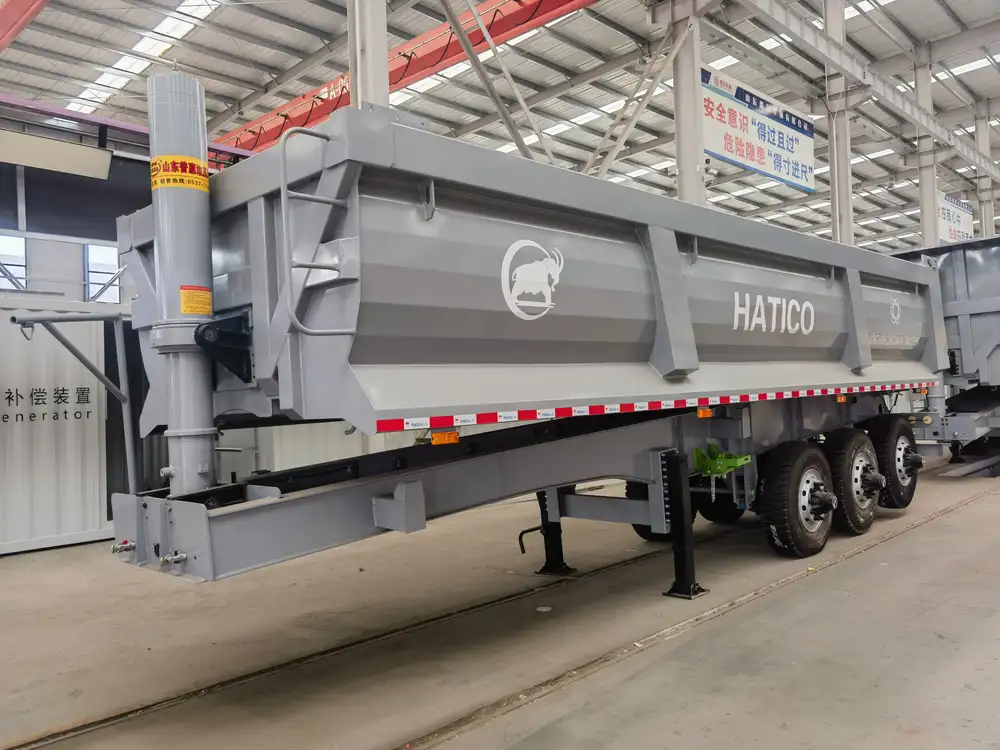When considering flatbed trailers for transporting various goods, one pressing question surfaces: how tall can freight be on a flatbed trailer? Understanding height restrictions is crucial for compliance, safety, and maximizing load efficiency. This article explores the intricacies of height limitations, factors influencing these restrictions, and practical tips for loading and transporting cargo effectively.
Height Regulations for Flatbed Trailers
Federal Height Regulations
In the United States, the Federal Highway Administration (FHWA) sets regulations regarding the maximum height for vehicles traveling on highways. The general standard limits a vehicle’s height to 13 feet 6 inches (162 inches) from the ground. This height encompasses the trailer, the cargo, and any additional equipment like tarps or load securements.
| Regulation Type | Max Height |
|---|---|
| Federal Regulation | 13 ft 6 in (162 in) |
| Typical State Regulation | Varies; Check local laws |

State-Specific Variations
While federal regulations provide a guideline, each state may have specific variations. Some states might have stricter limits, particularly in urban areas or regions with lower underpasses. It is essential for drivers and transportation managers to consult local regulations before planning routes.
Example: State-Specific Height Limits
| State | Max Height | Notes |
|---|---|---|
| California | 14 ft (168 in) | In certain areas, like Los Angeles. |
| Texas | 13 ft 6 in (162 in) | Standard across the state. |
| New York | 12 ft 6 in (150 in) | Common in urban routes due to low bridges. |
Factors Influencing Freight Height

Trailer Configuration
The type of flatbed trailer can significantly influence how high freight can be stacked. Here are some common configurations:
- Standard Flatbed Trailers: Typically, these have a maximum height similar to the federal guideline—13 feet 6 inches.
- Step Deck Trailers: These have a lower deck height, allowing for taller loads without exceeding height restrictions. The maximum height for these typically allows loads up to 11 feet.
- Double Drop Deck Trailers: Designed for exceptionally tall loads, they enable heights up to 12 feet 6 inches without risking compliance issues.
Load and Cargo Material
The nature of the cargo also plays a pivotal role in determining how tall freight can be. Here’s a breakdown of various cargo types and their typical maximum heights:
| Cargo Type | Typical Height Limit | Considerations |
|---|---|---|
| Construction Equipment | Up to 13 ft 6 in | May require permits in certain states. |
| Steel Beams | Up to 14 ft (168 in) | Often requires securement due to weight. |
| Furniture | Up to 12 ft (144 in) | Fragile items require special handling. |
Safety and Compliance Considerations
Exceeding the height limitations of flatbed trailers can lead to safety hazards, including:
- Load Shifting: Tall freight may shift during transport, risking cargo integrity and safety.
- Bridge Strikes: High loads may come into contact with bridges, leading to damage to both the cargo and infrastructure.
- Increased Regulatory Scrutiny: Overheight loads can attract the attention of law enforcement, resulting in fines or delays.

Loading and Securing Freight on Flatbeds
Best Practices for Loading
- Measure Twice: Always measure the cargo after loading to verify it meets height regulations.
- Balanced Load Distribution: Distributing weight evenly across the trailer is fundamental for safety and compliance.
- Use Proper Equipment: Employ cranes or forklifts for heavy or awkward-shaped loads to minimize risk.
Securing Freight Properly
Proper securing is vital to prevent cargo from shifting, leading to safety hazards. Here are common securing methods:
- Tarps: Utilize tarps that meet federal guidelines for cargo covering, ensuring they don’t add unnecessary height.
- Straps and Chains: Use high-tensile straps/bands, ensuring they are properly tensioned and rated for the cargo weight.
- Block and Brace: For irregular loads, utilize block and brace techniques to prevent movement.

Permits for Overheight Loads
When cargo exceeds the standard height regulations, obtaining a special permit becomes necessary. Here’s a quick glance at the general process:
- Freight Height Assessment: Determine the total height of the freight once loaded.
- Contact Regulatory Authorities: Reach out to state transportation departments for permit requirements.
- Apply for the Permit: Submit necessary documentation including route plans and cargo specifications.
- Adhere to Permit Conditions: Follow specified travel restrictions such as time windows and route guidance.
Conclusion
Understanding the maximum heights for freight on flatbed trailers is essential for safe, compliant, and efficient transportation. Federal and state regulations, combined with practical safety considerations, guide manufacturers, shippers, and drivers alike. By adhering to the outlined best practices for loading and securing cargo, while also knowing when to obtain special permits, you can assure successful shipping operations that adhere to the law.
As you navigate transportation regulations, consider this pivotal question: Are you adequately informed and prepared to transport your freight safely and within legal limits? With the above insights, your flatbed operations can be streamlined, compliant, and hassle-free, paving the way for success in the ever-evolving logistics landscape.



